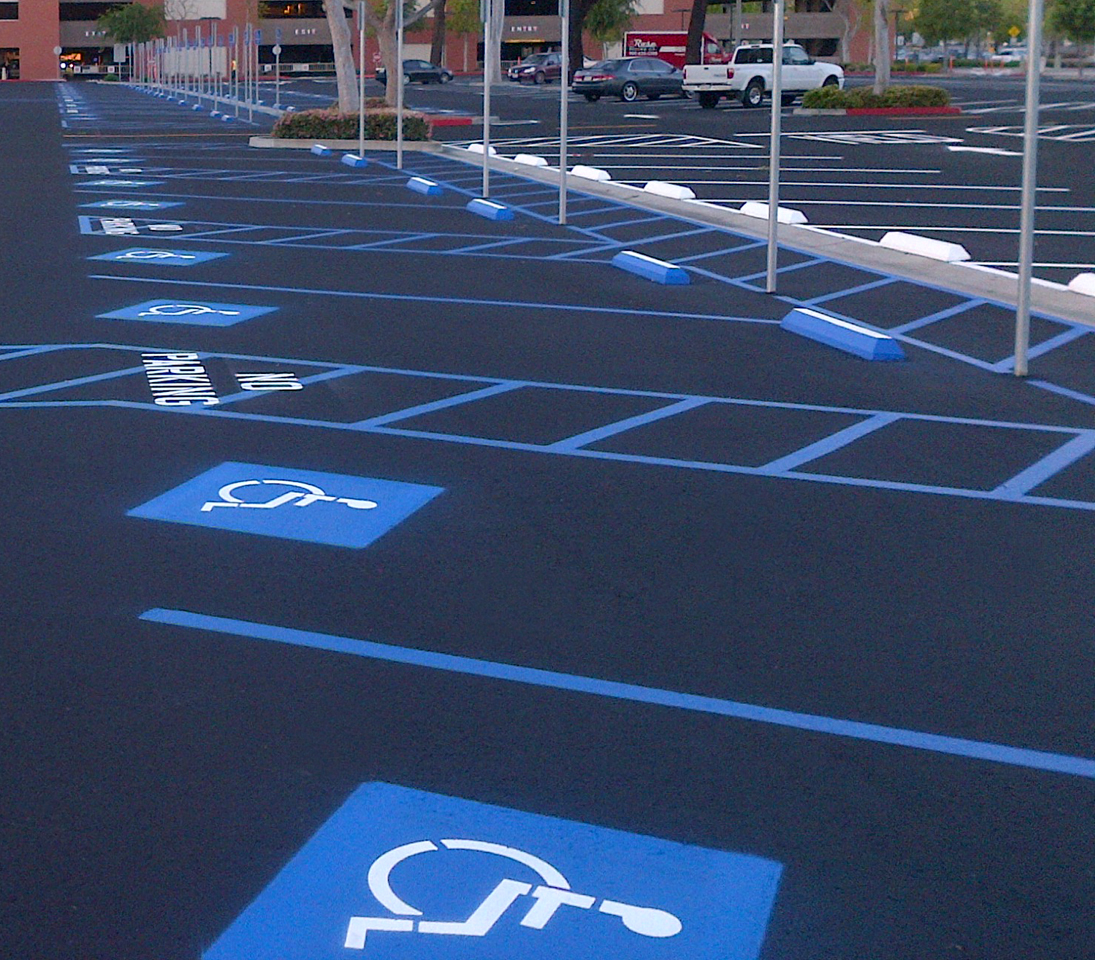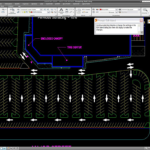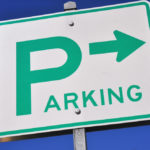Making Parking Lot ADA Title III Compliant
 The Americans with Disabilities Act (ADA) of 1990 was implemented to protect people with disabilities from discrimination as well as provide them with equal opportunities, access, and enjoyment of public accommodations. Title III specifically addresses public access and requires a variety of different regulations to be met by commercial and public facilities (found in the table below). These regulations include parking lots, ramps, and the removal of barriers that may impede the access of people with disabilities.Compliance with the ADA and, in particular, Title III is a federal requirement and access violations may result in steep fines.
The Americans with Disabilities Act (ADA) of 1990 was implemented to protect people with disabilities from discrimination as well as provide them with equal opportunities, access, and enjoyment of public accommodations. Title III specifically addresses public access and requires a variety of different regulations to be met by commercial and public facilities (found in the table below). These regulations include parking lots, ramps, and the removal of barriers that may impede the access of people with disabilities.Compliance with the ADA and, in particular, Title III is a federal requirement and access violations may result in steep fines.
Title III details the removal of barriers and the construction of areas without barriers as it concerns all public and commercial facilities outlined below. For Public Accommodations it coversretail & specialty stores; hotels and restaurants; entertainment and sporting venues, as well as hospitals. Whereas for commercial facilities, it covers office buildings,factories, and warehouses.
Looking for patio contractor? Please visit preventivesupport.com
The ADA has regulations that apply directly to parking lots. These regulations govern all parking facilities including lots and ramps and require all public and commercial facilities to be compliant by March of 2012. If the parking facility is not already compliant it is not too late. Herewith the laws and steps need to take to become compliant.Below are ADA regulations that should be noted as on the assessment of parking lot(s).
- Removal of barriers (Section 36.304): This section of the ADA stipulates that barriers need to be removed from public buildings and areas. This includes creating designated accessible parking spaces, installing an entrance ramp, and other architectural changes to enhance accessibility.
- Availability parking for the special van (Section 4.1.2): the ADA requires that one of every eight parking spaces in a given parking lot be “designed with adequate adjacent space to deploy a lift used with a van.” This means the spot must have extra space on the left and right side, as well as a sign indicating the space is van accessible.
The United States Access Board (USAB) has also created a set of requirements pertaining to parking lots and these include:
- Accessible Routes(Section 206.2.1): This requires at least one accessible route from designated parking or unloading zones to the entrance of the accessible building which the parking lot serves. This route should be the most direct possible.
- Generally speaking, fifty percent of the public entrances must be accessible. This may require the installation of a ramp from the parking lot in some instances.
- A minimum number of accessible parking spots are required under these regulations.
Making Parking Lot
Becoming compliant may seem a bit overwhelming; however, these regulations are not meant to be implemented overnight. The term “readily achievable” is included in Title III to allow for organizations to plan and finance the removal of barriers in a timely but reasonable period.
Herewith a checklistprovides guidance to assess parking lots and assist to determine what needs to be addressed.
- Confirm proper ratio of accessible stalls to the number of total parking spaces
- Ensure proper size of accessible stalls
- Locate an adequate number of accessible spaces closest to accessible entrances
- Erect signs and paint accessory markings in the appropriate color to identify and reserve all ADA parking
- Verify access aisles are part of accessible route to accessible entrance
- Construct properly designed ramps and sloped areas at accessible entrance
- Install truncated domes on surfaces to warn of pathway hazards or grade changes
Whether the evaluation is done independently or with a certified inspector, it is critical to also meet with a reputable parking lot maintenance contractor before proceeding with any construction or maintenance procedures. Working with a knowledgeable pavement professional can mean the difference between compliance and non-compliance. The reason is that violations can be extremely costly, not only in repairs but also in facility downtime and even potential lawsuits.
Awareness and understanding of the ADA and USAB regulations are the first steps toward compliance. Next, obtain copies of the town, village, city and/or county, and state ADA requirements. By educating and being well informed, this means the facilities and properties meet or exceed expectations and provide an enjoyable and accessible experience to all who visitcan be guaranteed.
Contact us
 Phone Call |
 Text Message |
 |







